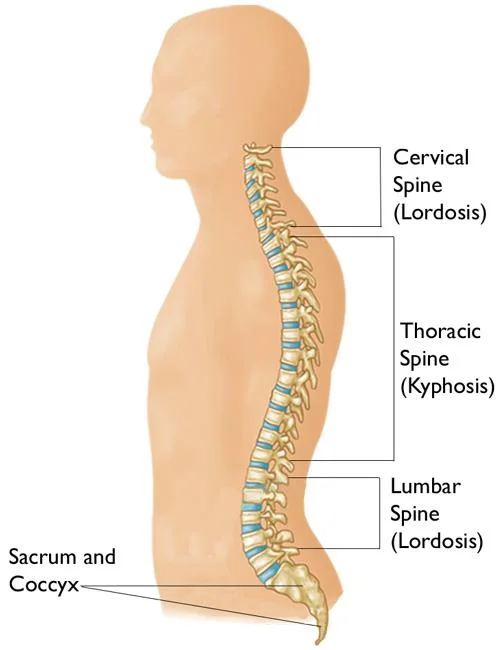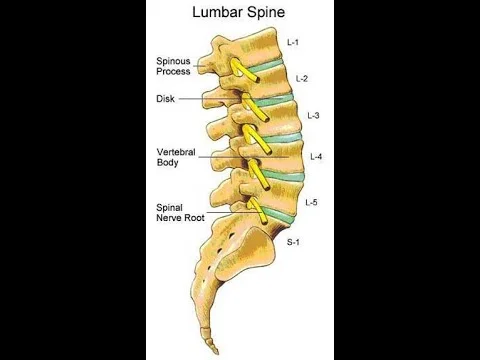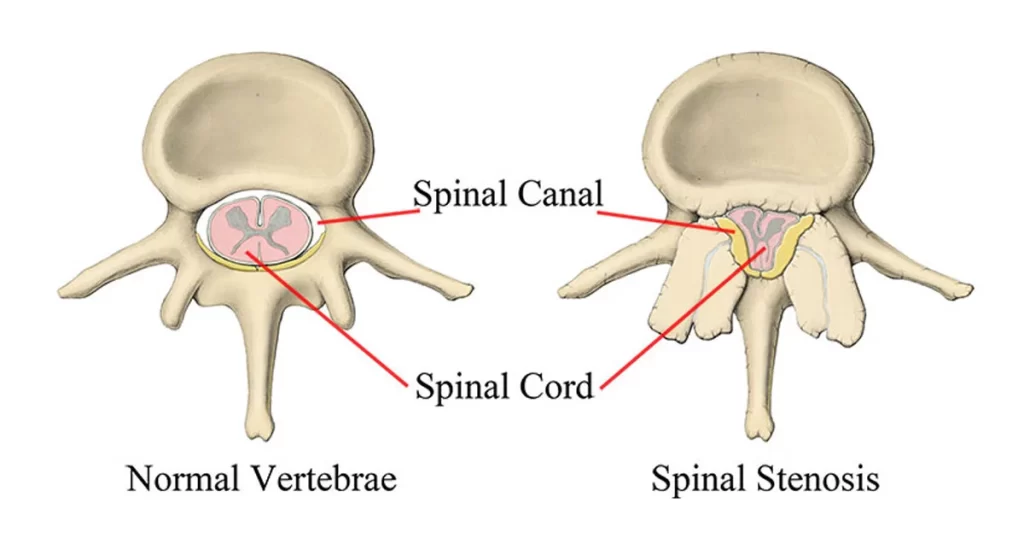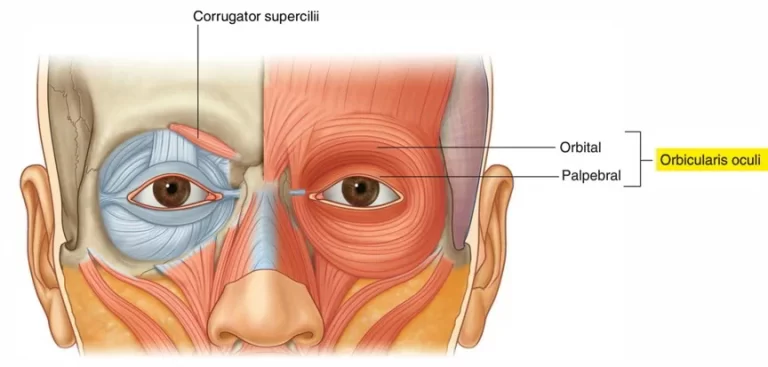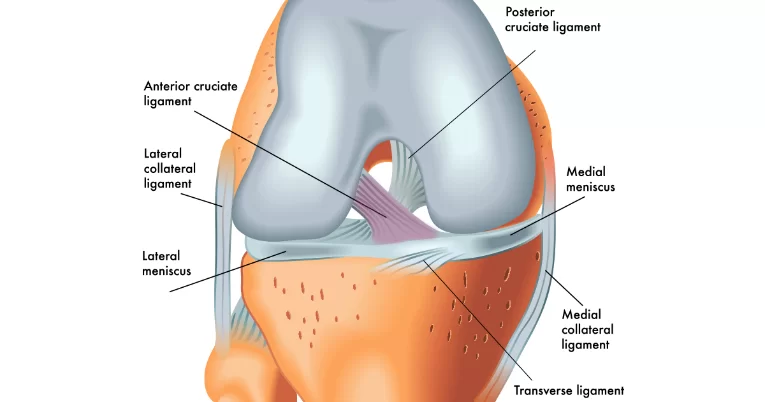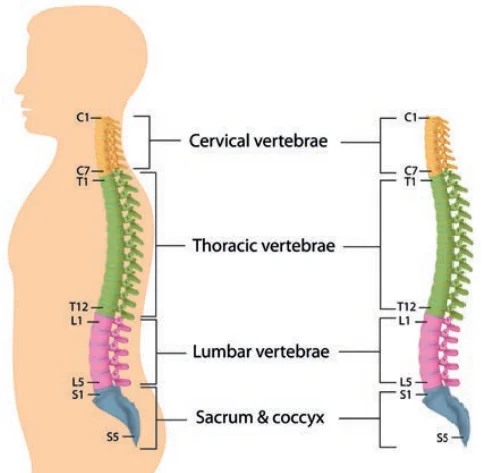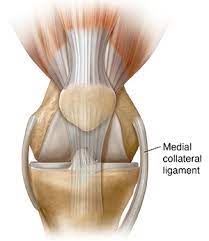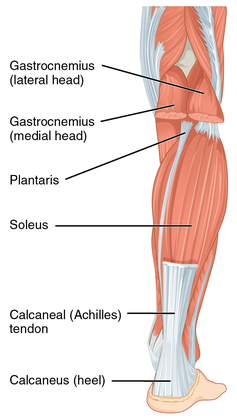Human Spine
Table of Contents
Introduction
The spine, or backbone, is the body’s main support structure. It joins different parts of the musculoskeletal system. The spine assists in sitting, standing, walking, twisting, and bending. Back injuries, spinal cord conditions, and other problems can harm the spine and cause back pain.
The vertebral column is a series of nearly 33 bones, called vertebrae, It is divided by intervertebral discs.
The vertebral column can be divided into 5 parts, with each part separated by a different vertebral structure.
The human spine is created of 5 major parts, the cervical, the thoracic, the lumbar, the sacral, and the coccyx.
spine made up of
- 7 cervical vertebrae
- 12 thoracic vertebrae
- 5 lumbar vertebrae
- 5 sacral vertebrae
- 4 coccyx vertebrae
These vertebrae are connected together to make one bone.
The shape and size of the vertebrae column in various parts form a characteristic double ‘’S’’ shape of the vertebral column in an upright posture. The cervical spine is naturally bent towards the inside curve, the thoracic is bent towards the outside curve and the lumbar is bent towards the inside curve.
Segment of spine
The spine, also known as the vertebral column, is a complex structure made up of 33 individual bones called vertebrae. These vertebrae are divided into five regions, each with its own distinct characteristics and functions.
Cervical Spine:
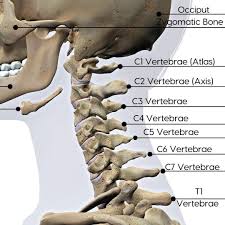
The cervical spine is located in the neck and consists of seven vertebrae (C1-C7). The first two vertebrae, the atlas (C1) and axis (C2) are unique in shape and function and allow for the head to rotate. The cervical spine also provides support for the weight of the head and protects the spinal cord as it exits the skull.
Thoracic Spine:
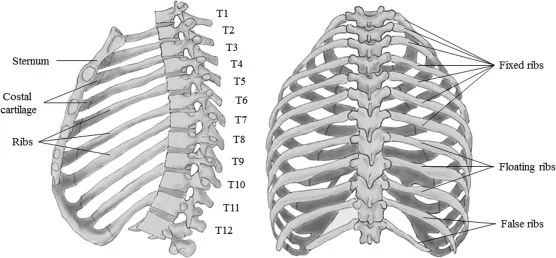
The thoracic spine is located in the upper back and consists of 12 vertebrae (T1-T12). The thoracic vertebrae are larger than the cervical vertebrae and have longer spinous processes that attach to the ribs, providing support for the ribcage and protecting vital organs such as the heart and lungs
Lumbar Spine:
The lumbar spine is situated in the lower back and consists of five vertebrae (L1-L5). The lumbar vertebrae are the largest and strongest of the spinal bones, supporting the weight of the upper body and allowing for bending and twisting movements.
Sacral Spine:
The sacral spine is located at the base of the spine and consists of five fused vertebrae (S1-S5). The sacrum forms the back wall of the pelvis and provides a stable foundation for the weight of the upper body.
Coccyx:
The coccyx, also known as the tailbone, is located at the very bottom of the spine and consists of four fused vertebrae. The coccyx serves as an attachment point for muscles and ligaments and provides some support for sitting.
Each individual vertebra is made up of several parts, including the body, spinous process, transverse processes, and vertebral arch. The body is the main weight-bearing portion of the vertebra, while the spinous process and transverse processes serve as attachment points for muscles and ligaments. The vertebral arch surrounds and protects the spinal cord, forming a canal through which it passes. The intervertebral discs, located between each pair of vertebrae, act as shock absorbers and allow for movement and flexibility in the spine.
Intervertebral discs
Intervertebral discs are the soft, gel-like cushions located between each pair of vertebrae in the spine. They act as shock absorbers, helping to distribute weight and pressure evenly across the spine. The discs also allow for movement and flexibility in the spine, allowing us to bend, twist, and move our backs.
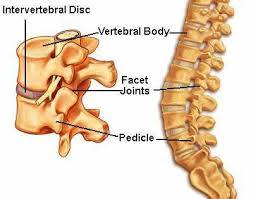
Each intervertebral disc is created of two main parts first one is the annulus fibrosus and the second one is the nucleus pulposus. The annulus fibrosus is a tough, fibrous outer layer that surrounds and contains the softer nucleus pulposus. The nucleus pulposus is a gel-like substance that is rich in water and proteoglycans, which help to give the disc its cushioning properties.
As we age, the intervertebral discs can become less flexible and lose some of their water content, making them more susceptible to injury or damage. This can lead to conditions such as herniated discs, where the nucleus pulposus bulges out through a tear in the annulus fibrosus, putting pressure on nearby nerves and causing pain and discomfort.
Treatment for intervertebral disc problems may include physical therapy, medication, or surgery. In some cases, a damaged or herniated disc may be removed and replaced with an artificial disc or fused with nearby vertebrae to provide stability. Maintaining good posture, exercising regularly, and avoiding activities that put excessive strain on the back can help to prevent intervertebral disc problems from developing.
Facet joints
Facet joints, also known as zygapophyseal joints, are small joints located between the vertebrae in the spine. They connect the posterior (back) aspect of one vertebra to the anterior (front) aspect of the vertebra above it. There are two facet joints among every pair of vertebrae, one on each side of the spine.
The facet joints play a very important role in the motion and stability of the spine. They allow for controlled movement and rotation of the spine while also providing stability and support to prevent excessive movement or injury.
The facet joints are lined with cartilage and surrounded by a capsule filled with synovial fluid, which lubricates and nourishes the joint. The joint surfaces are covered with a thin layer of smooth cartilage that allows for smooth movement and reduces friction between the bones.
Like other joints in the body, the facet joints can become damaged or inflamed, leading to pain and discomfort. This can occur due to age-related wear and tear, injury, or conditions such as arthritis.
Treatment for facet joint problems may include physical therapy, medication, or injections of corticosteroids or numbing agents into the joint. In some cases, surgery may be necessary to remove damaged tissue or fuse the joint to provide stability. Maintaining good posture, exercising regularly, and avoiding activities that put excessive strain on the back can help to prevent facet joint problems from developing.
Spinal cord and nerves
The spinal cord is a long, cylindrical bundle of nerve fibers that extends from the brainstem down to the lower back. It is protected by the vertebral column and is surrounded by cerebrospinal fluid, which cushions and nourishes it.
The spinal cord act as a connection for communication between the brain and the whole of the body. It contains millions of nerve fibers that transmit sensory information from the body to the brain and motor signals from the brain to the muscles. The spinal cord also has reflex pathways that allow the body to give rapid, automatic responses to certain stimuli.
Nerves are bundles of fibers that supply electrical signals between the spinal cord, the brain, and every part of the body. They are separated into two main types one is sensory nerves and the second is motor nerves.
Sensory nerves transmit information from the body’s sensory organs (such as the skin, eyes, and ears) to the brain. This allows us to perceive sensations such as touch, temperature, and pain.
Motor nerves transmit signals from the brain to the muscles, allowing us to move and perform actions. The nervous system also includes autonomic nerves, which control involuntary functions such as heart rate, digestion, and breathing.
The spinal cord and nerves can be affected by a variety of conditions, including injuries, infections, tumors, and degenerative diseases. Damage to these structures can cause a range of symptoms, including pain, weakness, numbness, and loss of function. Treatment may include medications, physical therapy, surgery, or other interventions depending on the underlying cause and severity of the condition.
Functions of the spine
The spine, also known as the vertebral column, is a complex structure of bones, joints, ligaments, and muscles that provides support and flexibility to the body. It has several important functions, including:
- Protection of the spinal cord: The spinal cord is a delicate bundle of nerves that runs from the brain down through the spine. The spine provides a protective bony casing for the spinal cord, shielding it from injury and damage.
- Support of the upper body: The spine supports the weight of the upper body, including the head, neck, and torso. It allows us to stand upright and maintain balance.
- Flexibility and movement: The spine is made up of individual vertebrae that are connected by joints and cushioned by discs. This allows for a wide range of movement, including bending, twisting, and turning.
- Attachment point for muscles: The spine serves as an attachment point for many muscles that control the movement of the arms, legs, and torso. These muscles work together to allow us to perform various activities, such as lifting objects or running.
- Blood supply to the spinal cord: The spine contains blood vessels that supply oxygen and nutrients to the spinal cord. This helps to maintain the health and function of the nervous system.
Overall, the spine plays a crucial role in the body’s ability to move, protect vital organs, and maintain overall health and well-being.
Conditions that affect the spine
There are several conditions that can affect the spine, including:
- Herniated disc: A herniated disc occurs when the soft center of a spinal disc pushes through a crack in the tougher exterior. This can put pressure on nearby nerves, causing pain, numbness, or weakness in the arms or legs.
- Spinal stenosis: Spinal stenosis is a narrowing of the spinal canal, which can create pressure on the spinal cord and nerves. Symptoms may include pain, numbness, or weakness in the legs, as well as problems with balance and coordination.
- Scoliosis: Scoliosis is a curvature of the spine that can cause uneven shoulders, hips, or waistline. In major cases, it can also cause breathing problems.
- Osteoarthritis: Osteoarthritis is a degenerative joint disease that impacts the joints in the spine. It can be the reason for stiffness, pain, and reduced range of motion.
- Osteoporosis: Osteoporosis is a condition in which bones become very weak and brittle. This can increase the risk of fractures in the spine and other bones.
- Spinal cord injury: Spinal cord injuries can occur as a result of trauma, such as a car accident or fall. These injuries can cause paralysis or loss of sensation below the level of the injury.
- Sciatica: Sciatica is a medical condition in which the sciatic nerve, which runs from the lower back downwards to the legs, becomes compressed or irritated. This can be the reason for numbness, pain, or tingling in the legs.
Overall, these conditions can have a significant impact on a person’s quality of life and may require medical treatment or surgery to manage symptoms and prevent further damage to the spine.
How can we keep our spine healthy?
Keeping the spine healthy is essential for overall well-being and preventing conditions that can affect it. Here are some activities to keep a healthy spine:
- Exercise regularly: Regular exercise helps keep the spine strong and flexible. It can also help maintain a healthy weight, which reduces pressure on the spine.
- Practice good posture: Good posture helps maintain the natural curve of the spine and reduces stress on the muscles and ligaments. This includes sitting up straight, keeping the shoulders back, and avoiding slouching.
- Lift properly: while lifting heavy objects, use your legs instead of your back for lifting. maintain the object near to your body and do not do the twisting or bend while lifting.
- Maintain a healthy weight: Excess weight puts extra pressure on the spine, which can lead to conditions such as herniated discs and spinal stenosis.
- Quit smoking: Smoking can reduce blood flow to the spine and increase the risk of osteoporosis, which can weaken the bones in the spine.
- Eat a healthy diet: A diet rich in calcium and vitamin D can help keep bones strong and prevent osteoporosis. Eating foods that reduce inflammation, such as fruits, vegetables, and omega-3 fatty acids, can also help prevent conditions that affect the spine.
- Practice stress management: Stress can cause tension in the muscles of the back and neck, leading to pain and discomfort. Practicing stress management techniques such as meditation or yoga can help reduce tension in these areas.
By following these tips, individuals can maintain a healthy spine and reduce their risk of developing conditions that can affect it.
Exercise for spine
There are several types of exercises that can be helpful in maintaining a healthy spine and managing spinal conditions. Here are a few examples:
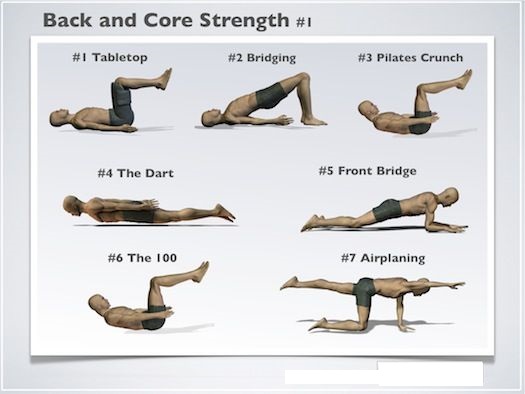
- Core strengthening exercises: Strengthening the muscles in the abdomen and lower back can help support the spine and reduce the risk of injury. Examples of core strengthening exercises include planks, bridges, and pelvic tilts.
- Flexibility exercises: Stretching exercises can help improve flexibility and range of motion in the spine. Examples of flexibility exercises include cat-cow stretches, seated spinal twists, and hamstring stretches.
- Aerobic exercise: Regular aerobic exercise, such as walking, swimming, or cycling, can help maintain overall fitness and reduce the risk of obesity, which can put extra pressure on the spine.
- Yoga: Yoga is a form of exercise that combines stretching, strength training, and relaxation techniques. It can be particularly helpful for maintaining spinal health and reducing pain and stiffness.
- Pilates: Pilates is a form of exercise that focuses on strengthening the core muscles and improving posture and balance. It can be helpful for managing conditions such as herniated discs and spinal stenosis.
It’s important to talk to a healthcare provider before starting any new exercise program, especially if you have a history of spinal conditions or injuries. A physical therapist or certified personal trainer can also provide guidance on safe and effective exercises for maintaining spinal health.
Summary
The human spine is an important part of the body that supports the upper body and protects the spinal cord. Maintaining a healthy spine is crucial for overall health and wellness. There are several types of exercises that can help maintain spinal health, including core strengthening, flexibility, aerobic exercise, yoga, and Pilates. It’s important to consult with a healthcare provider before starting any new exercise program, especially if you have a history of spinal conditions or injuries.
FAQ
The human spine, also known as the vertebral column, is a series of bones that make up the central support structure of the body. It consists of 33 individual vertebrae, which are stacked on top of each other and separated by intervertebral discs.
A spinal cord injury occurs when there is damage to the spinal cord, which can result in loss of sensation and movement below the site of the injury. It can be caused by trauma, disease, or other factors.
To keep your spine healthy, it is important to maintain good posture, exercise regularly, avoid smoking, and practice safe lifting techniques. It is also important to seek medical attention if you experience back pain or other symptoms.

